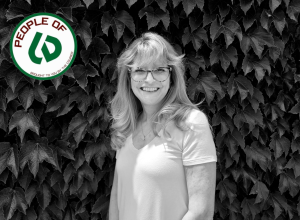Closing socioeconomic achievement gaps: “What Does Equity Truly Mean at College of DuPage?”
October 12, 2020
In order to continue extending community outreach within minority communities, the College of DuPage Equity Resources Center Team is currently submitting a potential future proposal to the school board that would aid in eliminating educational barriers to student success in minority communities.
Cynthia Sims, associate vice president of Academic Partnerships and Learning Resources, says that through this initiative, a small team of students would collaborate in identifying necessary components for students of color, further assisting them in their successes at and beyond completion of COD. Students are essential indicators on which areas of the school’s educational, social and communal structure could use further establishment and possible improvements. By implementing this team, Sims anticipates student-faculty-staff engagement and involvement to contribute to the campus’ overall inclusion of various demographics.
Lauren Morgan, Speech Communication Department chair, hosted a virtual roundtable on Wednesday, Oct. 7, inviting COD students, faculty, and staff to cultivate meaningful practices that would support minority communities and their measured successes in the academic arena. “What Does Equity Truly Mean at College of DuPage?” covered the topic of social equity and what an inclusive, supportive environment looks like for fellow COD students.
Last year, COD President Brian Caputo launched the Equity initiative at the college to address the issues of socioeconomic achievement gaps within the school community, through a partnership called the Illinois Equity and Attainment Initiative. It targets racial and socioeconomic achievement gaps across the state, with efforts to eliminate them by the year 2025.
“It is all about student success,” Caputo said last Wednesday at the virtual forum. “Beyond that, what we are trying to do is to close achievement gaps. If you look at some of the success statistics of our white students compared to our students of color, and some of our economically disadvantaged students, there are gaps. Some gaps are bigger than others. Really, what this program is all about is trying to close those gaps through a variety of different strategies.”
Caputo said this initiative is especially crucial right now, with a better understanding of what constitutes overall student success and how it can be expanded. Compared to the 50% of COD student body that identifies as white, minority communities–primarily Hispanics (25%) and the Black community (7%)– indicate a gap in measured/perceived success, according to 2020 Research and Analytics done by the college.
Some ways the college is implementing the elements of this program within the current COD structure is through delivery of student support services, including financial aid assistance and distribution, onboarding, and advising. Caputo referred to these combined elements as a “holistic approach,” one in which will lead to overall student success and will help minimize the gap.
Although the idea of success looks different for everyone, there is a primary focus on completion of a degree, the leading factor which will close the socioeconomic and racial gaps in schools. Participants of the initiative, however, would like to emphasize that, although the statistics present different, maybe lower or higher, numbers depending on race, it is an average observation in which individuals may prove otherwise. Besides simply educational limits, Jill Salas, Equity team chair and English faculty member, drew attention to the importance of identifying systemic barriers within society that create boundaries towards student success, alongside recent complications presented by the current pandemic and its harsh impact on minority communities.
Such development surrounds three separate, yet equally important components, said Associate Vice President of Assessment and Student Success Lisa Stock. These components include professional development, human resources processes and services enhancing the already established outreach options for COD communities of color, such as the Center for Student Diversity, Equity and Inclusion (CSDEI).
Aside from systematic implementations, Anthony Ramos, interim dean of Arts, Communication & Hospitality, spoke about the smaller, easier ways to address the overall issue of socioeconomic and racial gaps in a school setting and community at large.
“How are we more intentional about bringing equity into the conversation, that it is a value, that it is something that is a driving force of our strategic initiatives at the college?” Ramos asked.
This is referring to the initial implementation of COD staff and faculty within the hiring process. He suggested they should be evaluated, to a degree, on how they, as an individual, can raise awareness to the situation–in a classroom setting–while also attempting to aid in the solution, one student at a time.
Caputo referred to, not only the forum, but the initiative, as a whole, as a comprehensive, all-inclusive calling to everyone, in each of their own aspects of the overall institution.
“The big takeaway of this is the level of dedication to lean into the work despite the discomfort,” said Salas. “Especially now, that things are so compounded by the complexity and difficulty of COVID-19, we have been resilient and still showing up to the work, and being willing to look in the mirror and look critically, instead of avoiding it and casting it aside, confronting it.”


















